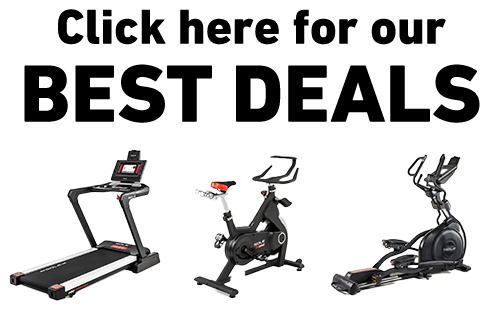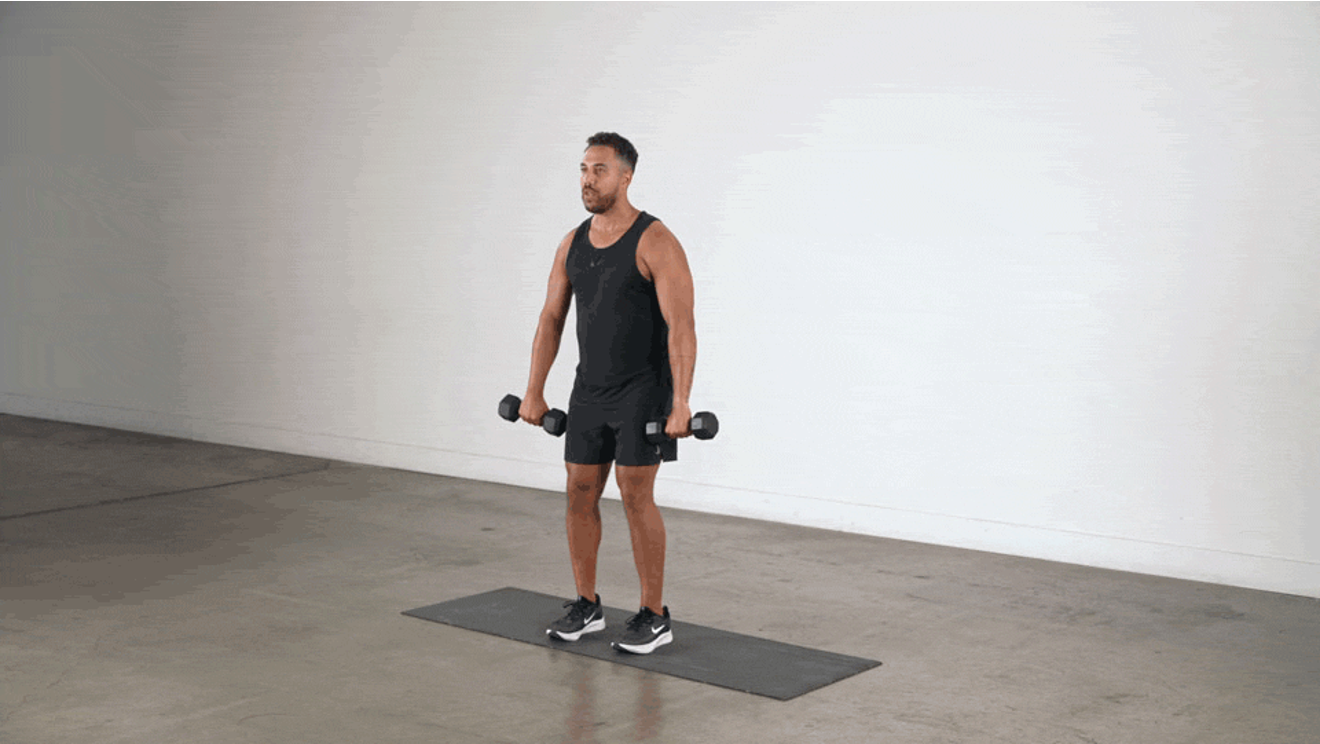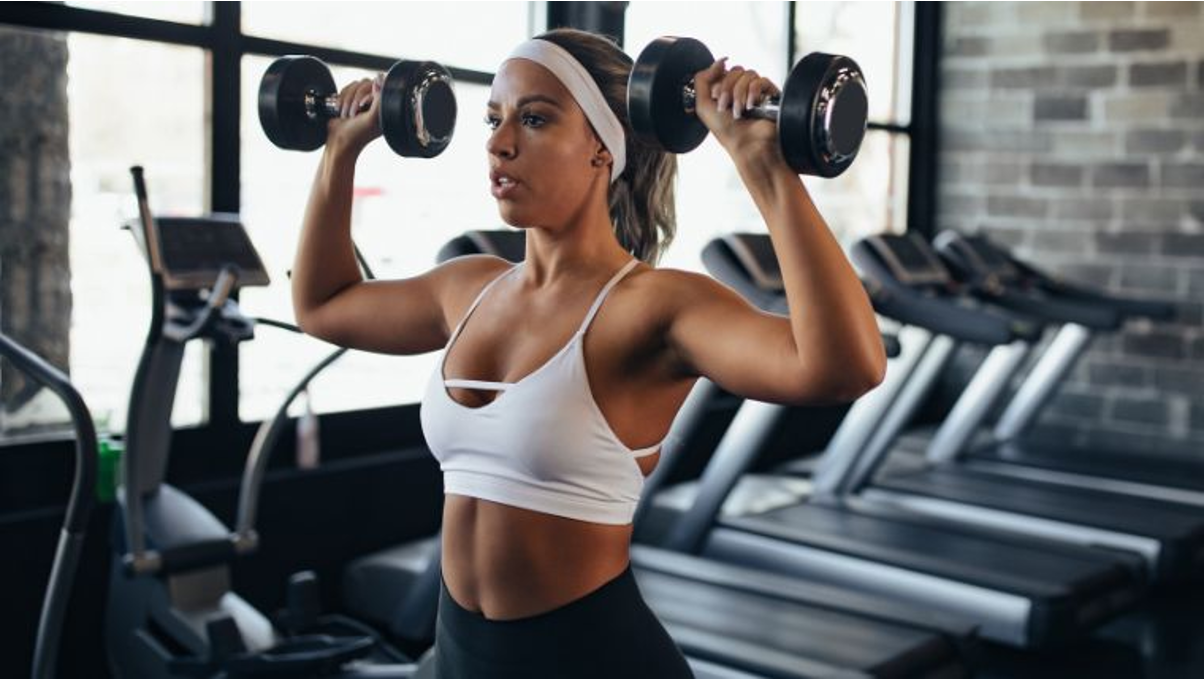Key Takeaways
- The Cuban press is a killer combo move that hits multiple shoulder muscles while bulletproofing your rotator cuff.
- Using dumbbells for Cuban presses provides greater range of motion and helps identify and correct muscle imbalances between your left and right shoulders.
- Do Cuban presses regularly, and watch your shoulder injury risk reduce while your other lifts get stronger.
- Starting with lighter weights (3–10 pounds) is essential for proper form and maximum benefit when performing Cuban presses.
- SOLE SW155 adjustable dumbbells work great for Cuban presses without buying multiple light dumbbell sets. You can start as light as 5 pounds and increase gradually.
What Is a Cuban Press?
The Cuban press takes an upright row, external rotation, and overhead press, then mashes them into one fluid movement. Fun fact: it's not actually from Cuba. Strength coach Mike Burgener named it after watching Cuban weightlifters crush this exercise during their shoulder training. Since then, it's become a great choice for strength athletes, overhead athletes, and rehab specialists who know what's up.
What sets the Cuban press apart? It nails those weak external rotators that most people ignore while hitting your deltoids from every angle. You're both building muscle and creating mobile, injury-resistant shoulders. Grab dumbbells and you'll also expose any strength imbalances between sides.
|
At SOLE, we're proud to offer top-quality exercise equipment designed for home and gym use. Our machines are built to meet the highest standards of durability and performance, making them ideal for fitness enthusiasts at any level. SOLE Products
|
Muscles Targeted
The Cuban press is like a full-service shop for your upper body. Knowing what muscles you're hitting helps you understand why this exercise is such a game-changer for shoulder health and performance. (Image courtesy of BarBend)
Primary Muscles
The Cuban press hammers all three heads of your deltoids: front, side, and rear. During the upright row, your lateral delts do the heavy lifting. Rotate your arms and the rear delts kick in. Press overhead and your front delts take over. Getting complete shoulder development in one exercise is true efficiency.
But the real magic is that the Cuban press directly targets your rotator cuff muscles such as the supraspinatus, infraspinatus, teres minor, and subscapularis. These small but mighty muscles keep your shoulder joint stable but usually get ignored until they're injured. The external rotation phase specifically lights up the infraspinatus and teres minor, which rarely get enough love in typical training programs.
Secondary Muscles
Your shoulders might be the stars, but plenty of supporting players join the show. Your traps, especially the middle and lower parts, fire during the upright row. Your biceps help out during the row and stabilize during rotation.
The serratus anterior (that cool-looking muscle on your ribs) keeps your shoulder blade locked in place. Your core (abs and obliques) works overtime to keep you upright. Even your forearms get a workout from gripping the dumbbells. It's basically a party for your entire upper body.
Proper Form
The Cuban press isn't your typical "grab and go" exercise. It's a complex sequence that needs to flow smoothly. (Image courtesy of LiftManual)
Step-by-Step Guide
Stand with feet shoulder-width apart, knees soft, core tight. Hold dumbbells at your sides, palms facing your body, arms straight. This is home base.
Start the upright row by pulling the dumbbells toward your chin. Lead with your elbows and keep the weights close to your body. Stop when your elbows hit shoulder height, no higher.
Now for the tricky part: rotate your shoulders externally. Move your forearms from pointing down to pointing forward, creating a 90-degree angle at your elbows. Your upper arms stay parallel to the floor; don't let them drop.
From here, press the weights overhead until your arms are fully extended. You did it! Now reverse everything: lower to shoulder level, rotate forearms back down, then lower to start. That's one rep.
Common Mistakes
- Using too much weight, which compromises form and puts excessive strain on the shoulder joints
- Skipping the full external rotation, which reduces the rotator cuff benefits
- Shrugging the shoulders during the upright row, which can lead to impingement
- Allowing the elbows to drop during the rotation phase, reducing effectiveness
- Arching the lower back during the press portion, which can stress the spine
Weight Selection Tips
Forget what you press normally; the Cuban press demands humility. Most people need just 3–10 pounds to start, and even beasts rarely go above 15–20 pounds per hand. Your rotator cuff muscles are tiny compared to your delts and will tap out fast with heavy weight.
Pick a weight that lets you nail 10–12 perfect reps, especially that rotation phase where your rotator cuff works hardest. If any part of the movement gets ugly, drop the weight. Your form matters way more than the numbers on the dumbbells.
Key Benefits
Shoulder Stability
Your shoulder joint traded stability for crazy mobility. It can move every direction but relies on muscles to keep it in place. The Cuban press strengthens those stabilizer muscles, especially during the rotation phase. Better stability means better control in all your exercises and daily movements.
Your shoulder is basically a golf ball sitting on a tee. The surrounding muscles have to work constantly to keep that ball from rolling off. Cuban presses train these muscles to do their job better, which matters most during overhead movements when your shoulder is most vulnerable.
Rotator Cuff Strength
Your rotator cuff, which consists of four muscles that work together, such as the supraspinatus, infraspinatus, teres minor, and subscapularis, doesn't get much love from typical exercises. These four muscles stabilize your shoulder joint but are tough to target effectively with traditional exercises. The Cuban press, especially that external rotation part, hits them directly.
Strong rotator cuffs make every pressing movement better, from bench press to overhead work. Throwing athletes absolutely need this strength, and anyone who reaches overhead regularly benefits too. Regular Cuban presses can seriously boost rotator cuff strength, improving performance while cutting injury risk.
Improved Mobility
The Cuban press takes your shoulders through an epic range of motion. You're hitting upright rows, external rotation, and overhead pressing, that's movement in multiple planes. This comprehensive approach stops you from developing the movement restrictions that come from sitting all day or doing the same exercises over and over.
Better shoulder mobility makes life easier. Reaching overhead, putting groceries on high shelves, and washing your hair all get easier. Athletes see better movement patterns in swimming, tennis, volleyball, and throwing sports. Mobile shoulders are happy shoulders.
The Cuban press delivers way more than just muscle gains. This Swiss Army knife of exercises improves multiple aspects of shoulder function. (Image courtesy of BarBend)
Injury Prevention
Shoulders get hurt. A lot. By strengthening your rotator cuff and improving stability, Cuban presses work like insurance for your shoulders. They fix the imbalances that develop when you do too much pressing without enough pulling and rotating.
If you've had shoulder issues before, Cuban presses can help rehab (check with your doctor first). The controlled movement lets you safely strengthen everything while building resilience in previously injured tissue.
Long-term, Cuban presses might help prevent degenerative shoulder conditions. Keep your muscles balanced and joints moving properly, and you reduce wear and tear. Less wear means potentially avoiding conditions like rotator cuff tendinopathy or impingement syndrome.
Top Alternatives
1. Dumbbell I-Y-T Raises
These three movements done back-to-back create an alphabet of shoulder gains. Lie face-down on an incline bench. Raise your arms straight forward (I), out at 45 degrees (Y), then straight to the sides (T). Each position hits different parts of your shoulders and upper back.
I-Y-T raises isolate the rear delts and rotator cuff without the complexity of the Cuban press. They're perfect for beginners or as a finisher after heavier shoulder work. Use super light weights—even 2–3 pounds burns after a few sets.
2. External Rotations
Simple but effective, external rotations isolate the rotator cuff muscles. Use a cable at elbow height or a band. Keep your elbow at your side and rotate your forearm outward. That's it.
While not as comprehensive as Cuban presses, external rotations let you really focus on rotator cuff strength. They're also easier to load progressively and work great for rehab or prehab work. Do them at the end of upper body workouts for bulletproof shoulders.
3. Face Pulls
Face pulls might be the best rotator cuff exercise out there. Using cables or bands, pull toward your face with high elbows, creating external rotation similar to the Cuban press but horizontally instead of vertically.
What makes face pulls special? They fix that forward shoulder posture from sitting all day while strengthening your rear delts and external rotators. They're safe for almost everyone and easy to progress. For best results, alternate between Cuban presses and face pulls or do both in the same workout.
Pro tip: Face pulls work with bands, cables, or TRX trainers. They improve posture, rarely cause impingement, and scale for any fitness level.
4. Overhead Presses
Press Comparison:
- Standard Overhead Press: Mostly front delts, minimal rotator cuff work
- Arnold Press: Adds rotation, better for side delts than standard
- Cuban Press: Combines rotation and pressing, best for rotator cuff
- Pike Press: Bodyweight option that adds core work
Traditional overhead presses still build serious shoulders. They lack the Cuban press's rotational magic but let you move real weight for strength and size. The standard press hammers front delts, complementing the Cuban press's rear-delt focus.
Arnold presses bridge the gap. They start with palms facing you and rotate to palms-forward as you press. You get some rotation without the upright row part. For bodyweight fans, pike presses or wall handstand push-ups build similar strength while challenging your core.
Bulletproof Your Shoulders with SOLE's Precision Dumbbells
SOLE adjustable dumbbells are tailor-made for exercises like the Cuban press that demand precise, lighter loading.
The SW155 Adjustable Dumbbells adjust from 10–55 pounds, so you can use just the handles with minimal plates for those crucial 5–10 pound Cuban press sets that most people need.
What makes SOLE dumbbells ideal for this technical movement is their balanced construction. Unlike cheaper adjustable systems that feel wobbly with light loads, the engineering ensures stability even when you're using minimal weight. This balance is critical during the rotation phase where any wobbling can throw off your form and reduce the exercise's effectiveness.
The ergonomic handles provide the secure grip you need throughout all three phases of the movement: upright row, external rotation, and press. Your hands won't slip or cramp up during longer sets, letting you focus entirely on nailing that perfect form.
If you are serious about shoulder health, you might also want the SW180 Adjustable Dumbbells as your primary training dumbbells, then use the lighter settings specifically for Cuban presses and other prehab work. This way, you can seamlessly transition from heavy pressing movements to lighter rotator cuff work without switching equipment.
The SOLE Equipment Mat gives you a defined workout space with stable footing, which is important when you're focusing on the complex movement pattern of Cuban presses. Its non-slip surface ensures you maintain proper positioning throughout each rep.
SOLE equipment comes with the SOLE+ App, which includes shoulder-specific routines that show you exactly how to incorporate Cuban presses into your training. You'll learn proper progression strategies and how to combine them with other exercises for complete shoulder development.
Frequently Asked Questions (FAQs)
Can beginners do the Cuban press?
Yes, beginners can definitely perform the Cuban press, but should start with very light weights (even just the empty bar or 2–3 pound dumbbells) to master the movement pattern. Focus on perfecting each phase of the exercise before increasing weight. For complete newcomers to resistance training, it might be beneficial to first master the individual components—upright rows, external rotations, and overhead presses—before combining them into the full Cuban press sequence.
How heavy should my dumbbells be for the Cuban press?
Way lighter than you think. Most people use 3–10 pounds to start, and advanced lifters rarely exceed 15–20 pounds. Your rotator cuff muscles are tiny compared to your delts and limit how much weight you can use properly.
Choose weight that lets you nail the rotation phase with perfect form. If you're hiking your shoulders or cheating the movement, you're too heavy. The Cuban press is about quality, not quantity.
Will the Cuban press help my bench press?
Yes! Cuban presses improve shoulder stability and rotator cuff strength, both crucial for heavy benching. While they won't directly add pounds to your bench like tricep work, they keep your shoulders healthy for consistent training. Think of Cuban presses as insurance that lets you bench heavy for years without shoulder problems.
Can I do Cuban press every day?
Not recommended. Your rotator cuff muscles need recovery time. 2–3 times per week works best, with 48 hours between sessions. You can use super light Cuban presses (2–3 pounds) as a daily warm-up if your shoulders feel good, but that's activation, not training.
Which SOLE dumbbells are best for Cuban presses?
The SW155 Adjustable Dumbbells are actually perfect for Cuban presses. Most people need 5–10 pounds for Cuban presses, and with SOLE's adjustable system, you can use just the handles with one or two small plates to get that perfect light weight. You won't need to buy a whole set of light dumbbells that'll just collect dust. The balanced construction is huge for Cuban presses because any wobbling during the rotation phase ruins the movement.







Leave a comment
This site is protected by hCaptcha and the hCaptcha Privacy Policy and Terms of Service apply.